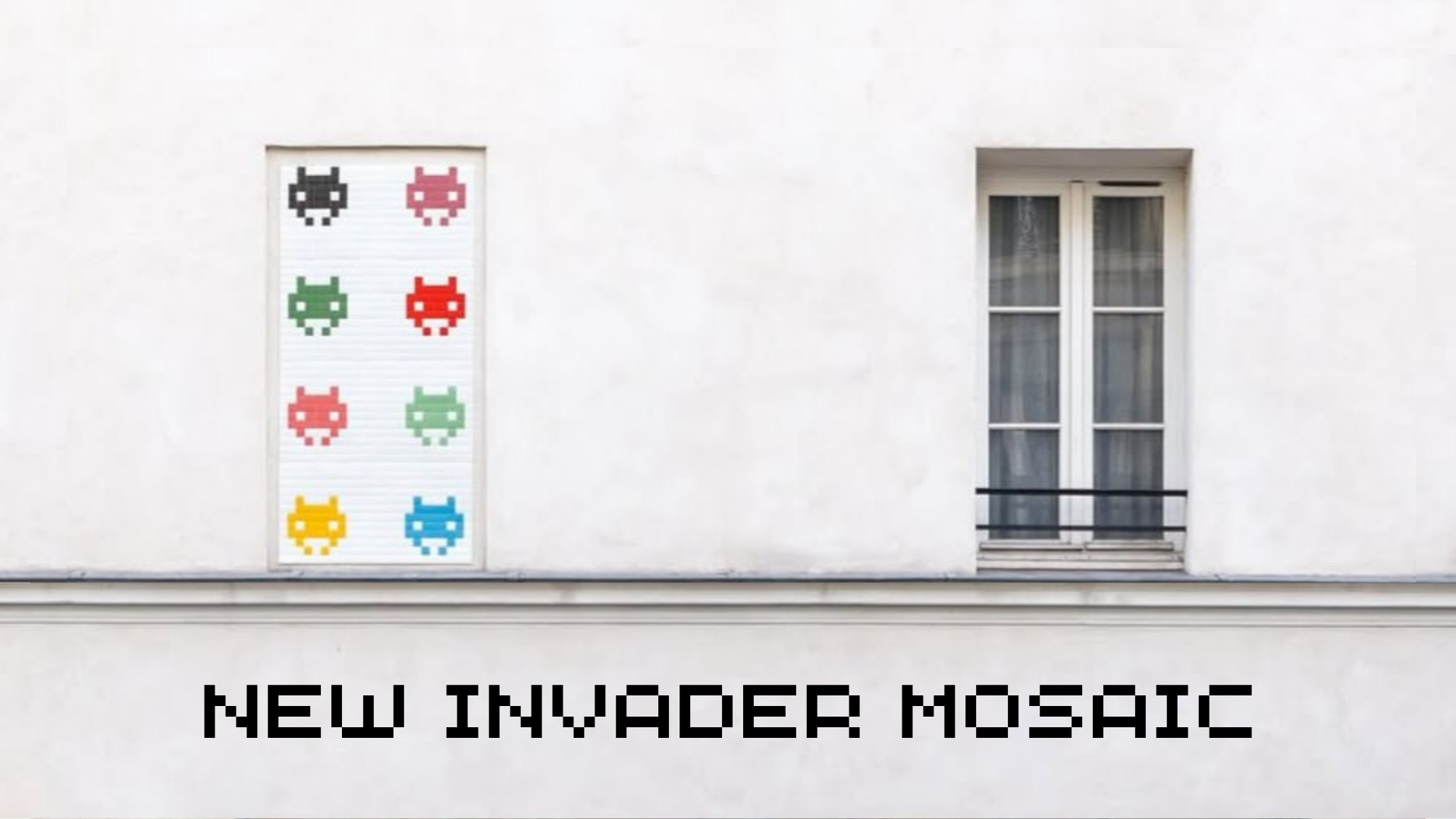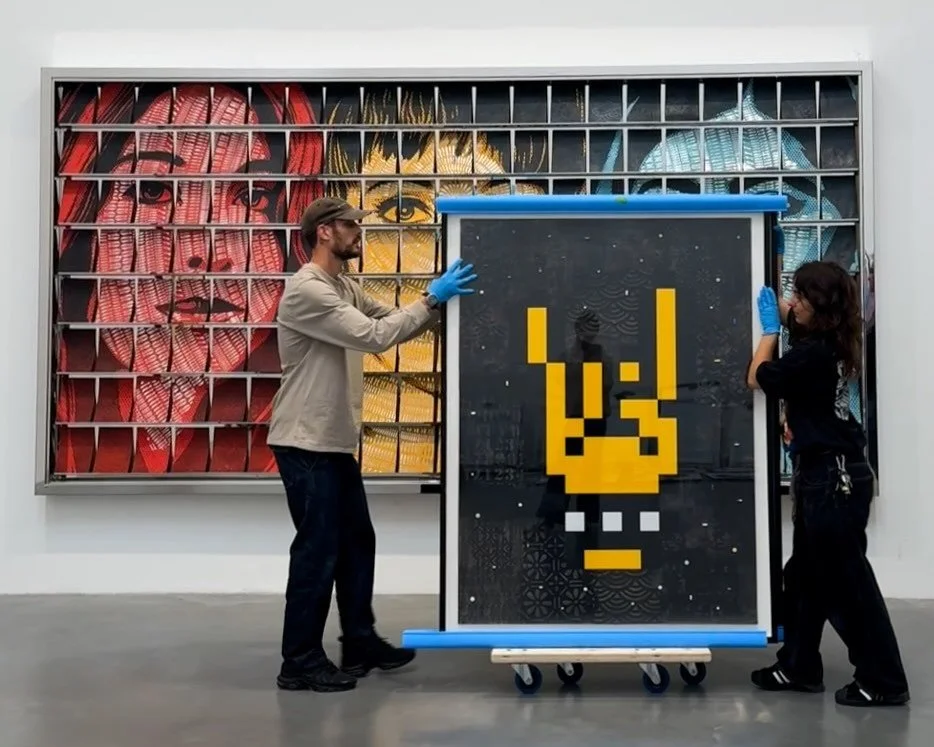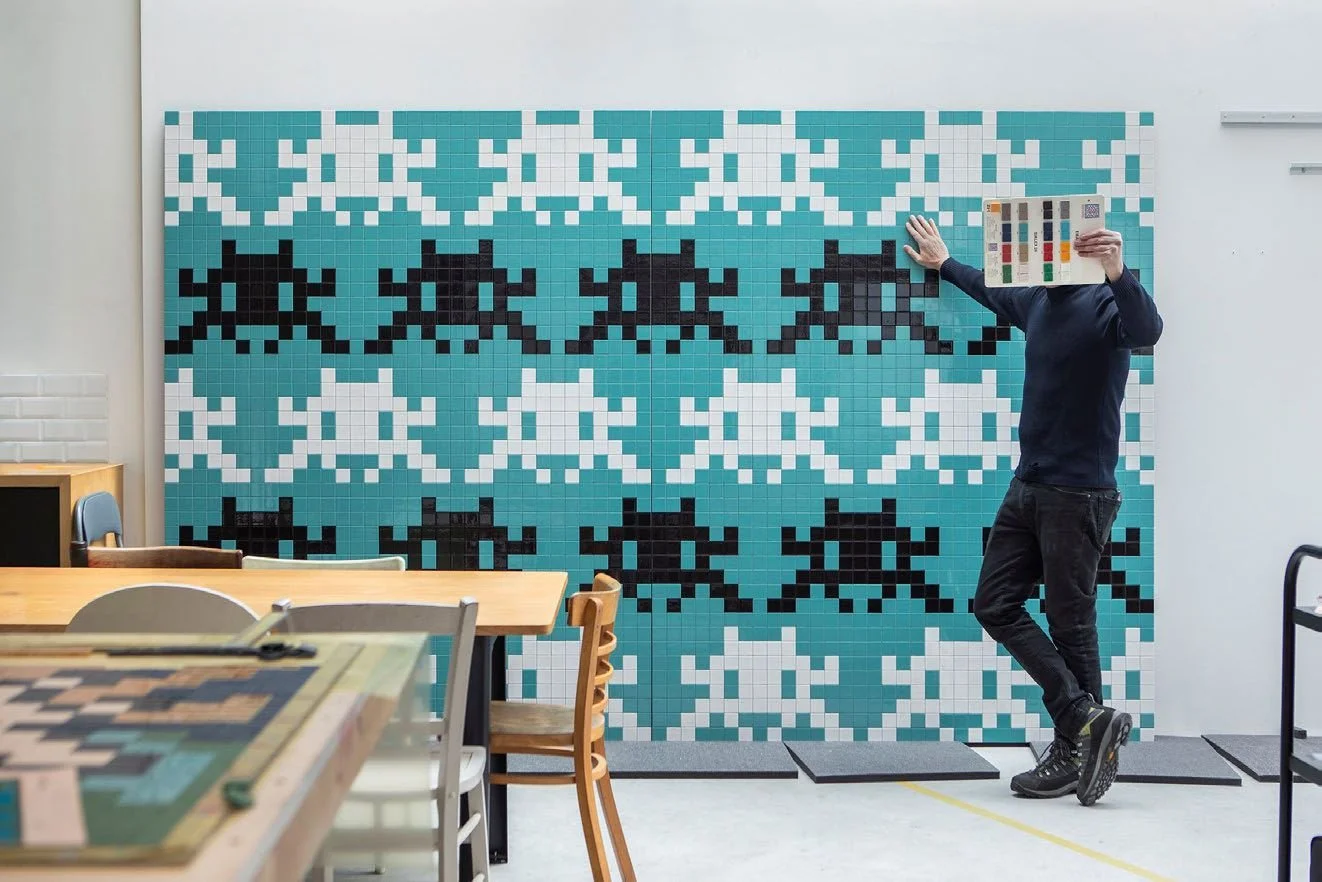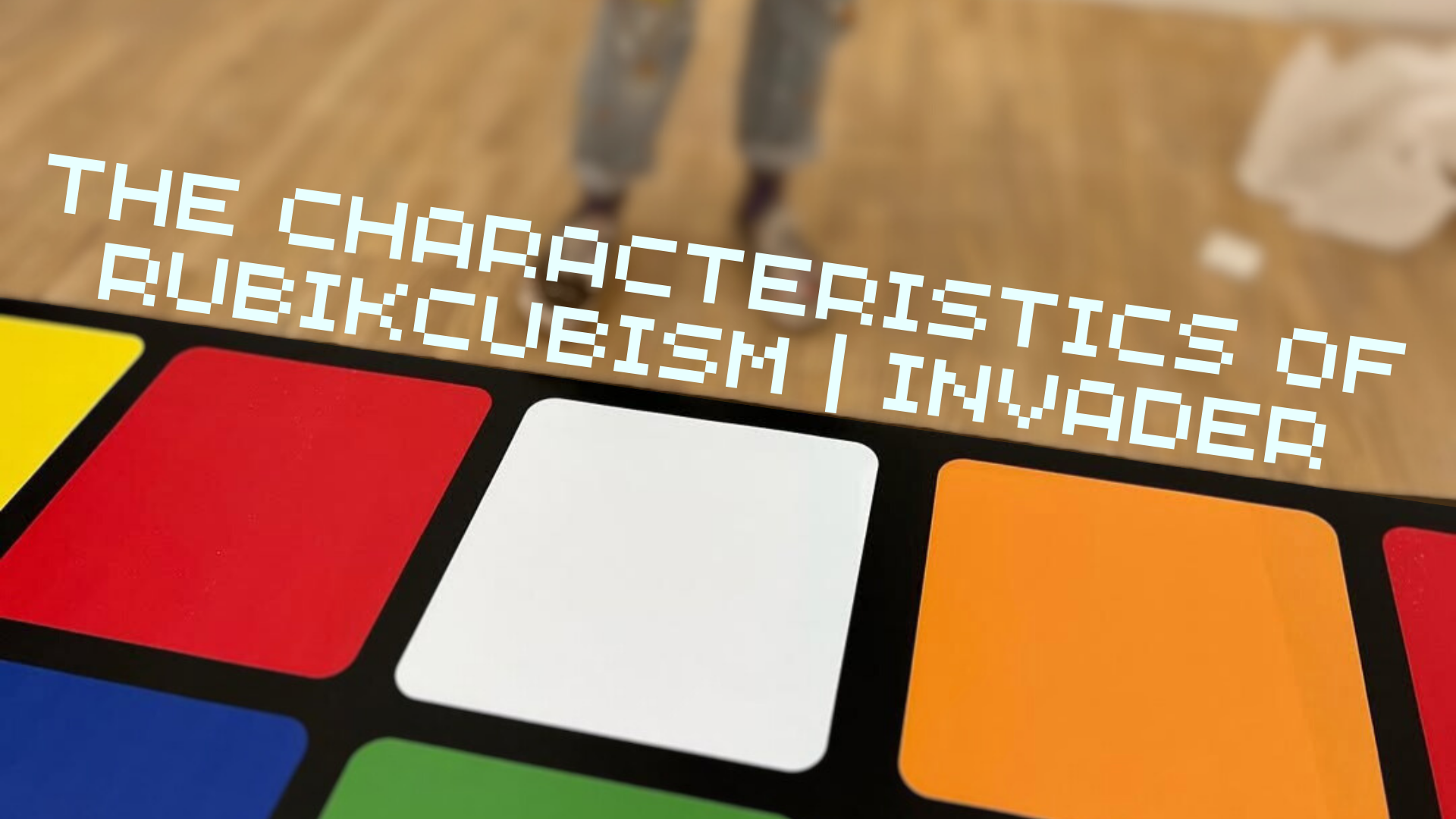Art4Space Project: The Space Invasion in Miami 2012
read more
The artist's name, Invader, references the iconic video game — Space Invaders. Inspired by the arcade game, Invader placed many mosaics worldwide and referred to them as Invasions from outer space, bit by bit taking over our society with his art. But before 2012, Invader hadn’t accomplished much concerning space. That is until the Art4Space Project, the turning point for Invader and space. This was when the Space One (SPACE_01) mosaic launched in Miami, USA. Let’s take a look at Invader’s Space Invasion!
The Story Begins
It all begins in Miami.
In early 2012, Jonathan Levine, the owner of the New York gallery Jonathan LeVine Projects, offered Invader a personal exhibition in Miami at the end of the year when they met at the international contemporary art fair. Invader accepted his proposal as Miami is located just south of the space coast of NASA’s launch site. This seemed like the perfect opportunity for Invader to launch his first space invasion, especially since this area is generally reserved for telecommunications equipment for military and scientific missions.
“Having spent the last fifteen years spreading space invaders at the four corners of the world, I dreamt of sending - or I should say return - one to space.”
-Invader
The Concept
Though Invader didn’t have much knowledge of astrophysics, he discovered that sending a meteorological balloon into the stratosphere was rather simple. As a result, he proceeded to assemble a device that would allow him to send a mosaic into space and bring back the images of the operation with a spacecraft, a mix of high-tech gadgets and genius. To keep it simple, it is an airtight box containing a camera that focuses only on the mosaic piece, Space One, with a GPS tracker that would give its position every 10 minutes, and includes an RFID chip for a more precise search of the craft within a 15-meter radius. On top of that, this device is surmounted by a radar reflector linked to a parachute, which is attached to a large helium balloon that will take off with all the equipment. The balloon expands on the way up, and at some point, bursts and begins a steep descent with a parachute.
The Launch
On August 20th, Invader and his companion, dressed in white jumpsuits bearing the Art4Space insignia, leave early in the morning with two bottles of helium and the spacecraft. After several flight simulations at different sites, they ended up at the Everglades agricultural area as the launch point, to avoid the ocean, the Everglades, and the Lake Okeechobee.
After launching the spacecraft, they immediately hit the road to follow the balloon by keeping their eyes on the balloon. Then, as the balloon went out of their sights, they used the GPS tracker and tracked the mosaic until the spacecraft left the troposphere and the GPS no longer sent a signal. The GPS signal was then lost for around 3 hours. Then, it took them one whole day to find the returned craft, which spent most of its journey in the stratosphere. The end resuly gave Invader 3 hours and 55 minutes of images and footage, reaching an altitude of around 22 miles, and most importantly, possibly the first artwork from space.
Challenges
Although Invader eventually was able to launch the spacecraft, it wasn’t without its challenges.
The weather condition was a big challenge to the crew, especially in a coastal area like Miami with much wind and rain, bearing a tropical monsoon climate. It hindered the first launch of the spacecraft for over a week.
In addition, the extreme heat was unbearable, especially when Invader and his companion were wearing plastic jumpsuits which covers their entire bodies. This was especially apparent when the artist’s iPhone had to be cooled after being exposed to the sunlight for too long, which caused Invader to miss an opportunity to take a picture of the spacecraft before lift-off.
To Invader, maintaining an Anonymous identity is very important. However, for the spacecraft project, Invader contacted a local journalist to accompany and document the entire project. Ironically, he only followed them on the first day of the test run which was unsuccessful. Their failure is later published in the local newspaper, which may have exposed their identity as the location of the launch site is publicized. Luckily, that did not happen.
On the technical side, there were two major obstacles during the project.
Firstly, it is inexperience. After all, it’s Invader’s first time doing a space project. There will be miscalculations, including the inconsistent amount of helium required to fill the balloon. Initially, Invader thought that one bottle of helium was enough for the launch, but Invader discovered it wasn’t enough on the first attempt. Later, they returned with double the amount, but ironically, one bottle was actually enough.
Secondly, they ran into much trouble on the retrieval of the spacecraft. The GPS display on their phone is automatically calibrated to the nearest road, so when the aircraft returned to Earth, they couldn’t find it the first day. On the following day, they had to violate private property and cross abandoned fields, while having to dodge deadly wild animals. They had insufficient preparations for the retrieval of the craft.
The Success
Despite the many challenges, the project is a massive success.
In celebration of the project’s success, Invader created a print. The Print, Art4Space, which had both 2D or 3D (which can only been seen with special glasses) versions, went into the auction market with huge demand. Everyone wanted a piece of it, which caused the price to skyrocket to an estimated value between £3,300 and £5,000 by MyArtBroker. The limited production of 50 editions makes it one of the most sought-after Prints in the collection.
The official Art4Space fabric stitched patch, which is only available in person, commemorates Invader’s first artwork launch into space in 2012. The original event flyer that came along with a gallery certificate of authenticity, is also sold at an extreme price also due to its limited edition of 500 copies.
A 25-minute short film was later presented in several film festivals including the FILAF in Perpignan and Lo Schemo dell'Arte in Florence documenting this project. It was also screened in Miami, Brussels, Paris, London, New York, and Tokyo..., symbolizing its great success.
All rights reserved
~
We do not own any copyrights to the photos used
~
All rights reserved ~ We do not own any copyrights to the photos used ~



















































